The Future of Gun Technology: Innovations to Watch
In recent years, the firearm industry has observed a significant surge in technological advancements poised to redefine weaponry boundaries. As we navigate through an era characterized by rapid innovation and digital transformation, understanding the evolving trends and innovations in gun technology has become increasingly vital.
This exploration highlights the cutting-edge developments shaping the future of firearms and emphasizes the importance of staying updated with these changes. Among these advancements, integrating artificial intelligence and the concept of reality into weapon systems stands out, promising to transform how we perceive and interact with firearms worldwide.
From autonomous weapons systems capable of making decisions without human intervention to smart gun technologies that enhance accuracy and safety, the scope of gun technology advancements is expanding at an extraordinary rate. Incorporating these technologies aims to eliminate unnecessary risks and improve the efficiency of firearm use, making them a critical consideration for enthusiasts, policymakers, and industry stakeholders keen on maintaining a competitive edge in the ever-evolving landscape of firearm technology.
Smart Guns: Enhancing Safety and Security
In exploring smart gun technology, the potential to revolutionize firearm safety and security benefits gun owners and the public. This new technology aims to prevent unauthorized use and accidental shootings, which are major concerns today.
Smart gun technology advancements
Smart guns, designed to work only in response to the owner’s unique fingerprint or palmprint, could drastically reduce these incidents by ensuring that the firearm cannot be fired by anyone other than the authorized user.
Safety enhancements
One critical area where smart gun technology can significantly impact crime rates is in reducing gun theft. A staggering amount of criminal activity involves stolen firearms, making stolen guns a key concern for both law enforcement and the public.
Accidental shootings, especially involving children, are another area where smart firearm technology can offer a solution. Too often, tragic incidents occur when children stumble upon unsecured firearms in their homes, leading to unintentional discharges.
By integrating RFID or biometric technology into firearms, only authorized owners would be able to use their guns, thus potentially preventing unauthorized use by criminals.
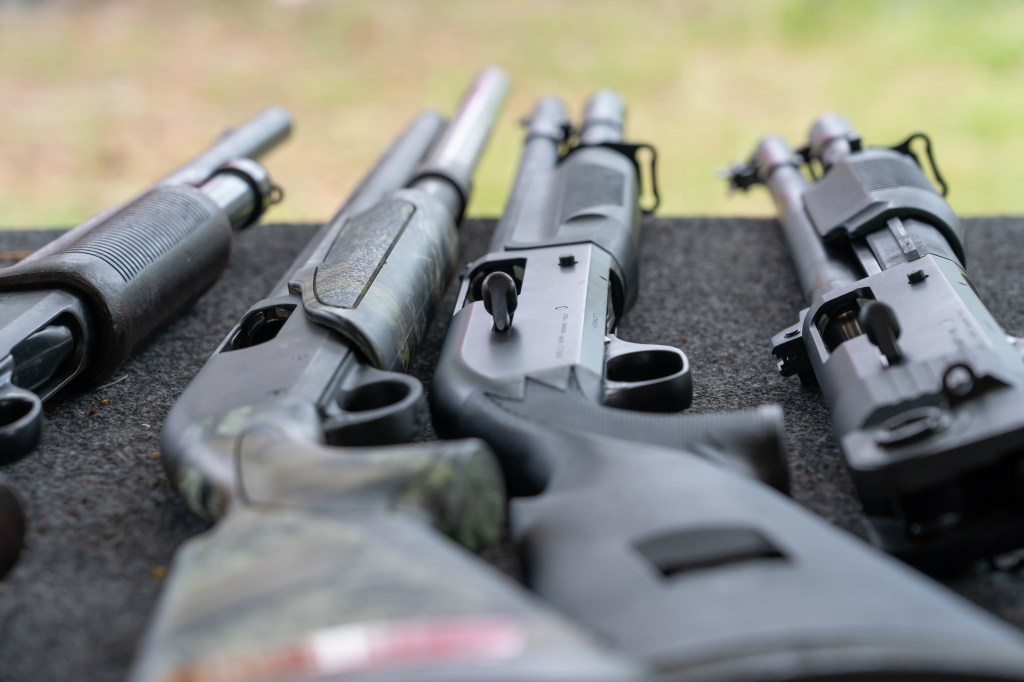
Precision and Accuracy: The Role of Advanced Optics
Significant strides have been made in the technology behind optics and sighting systems. These advancements enhance the shooter’s ability to acquire targets and drastically increase accuracy across various applications.
Optics enhancement
Central to this evolution are advanced gun optics and sighting systems, which have been meticulously designed to optimize firearm accuracy. Among these innovative technologies, smart scopes stand out due to their multifaceted functionalities that cater to every possible need a sharpshooter might have.
These scopes are equipped with environmental sensors that measure temperature, atmospheric pressure, and humidity in real-time. This data is crucial as it allows for precision optimization, ensuring that external conditions do not adversely affect the shot.
Shooting technology
Smart scopes boast range-finding capabilities that streamline determining the target’s distance. This feature eliminates the need for separate range-finding equipment and guns and enables quick and efficient decision-making, significantly enhancing accuracy.
These scopes are setting new standards in firearm accuracy by reducing human error and augmenting the shooter’s ability to make precise shots.
Another noteworthy aspect of these cutting-edge guns is their role in training improvement. The ability to record and analyze shooting data allows shooters to review their performance and identify areas for potential improvement meticulously.
This analysis in marksmanship training is a game-changer, providing shooters with actionable insights that can lead to significant advancements in their skills.

Electronics and Connectivity: Integrating Guns with Technology
In recent years, integrating electronic components into firearms has become a focal point of technological advancement, representing a new era of gun technology. This development enhances the mechanical functionalities of guns and leverages technology to transform how firearms are used, managed, and understood.
Connectivity and data
Incorporating firearm electronics opens up possibilities for data integration, which could lead to significant improvements in gun safety, usage efficiency, and performance optimization.
One of the most notable aspects of this technological evolution is the introduction of Bluetooth-enabled accessories designed to provide real-time data for various applications, including training and operational purposes. This allows for a seamless flow of information, making receiving real-time diagnostics and performance analytics possible.
The immediate feedback loop is also invaluable, particularly for competitive shooters and military personnel. By analyzing data collected during usage, shooters can gain insights into their performance, identify areas for improvement, and optimize their strategy and skills accordingly.
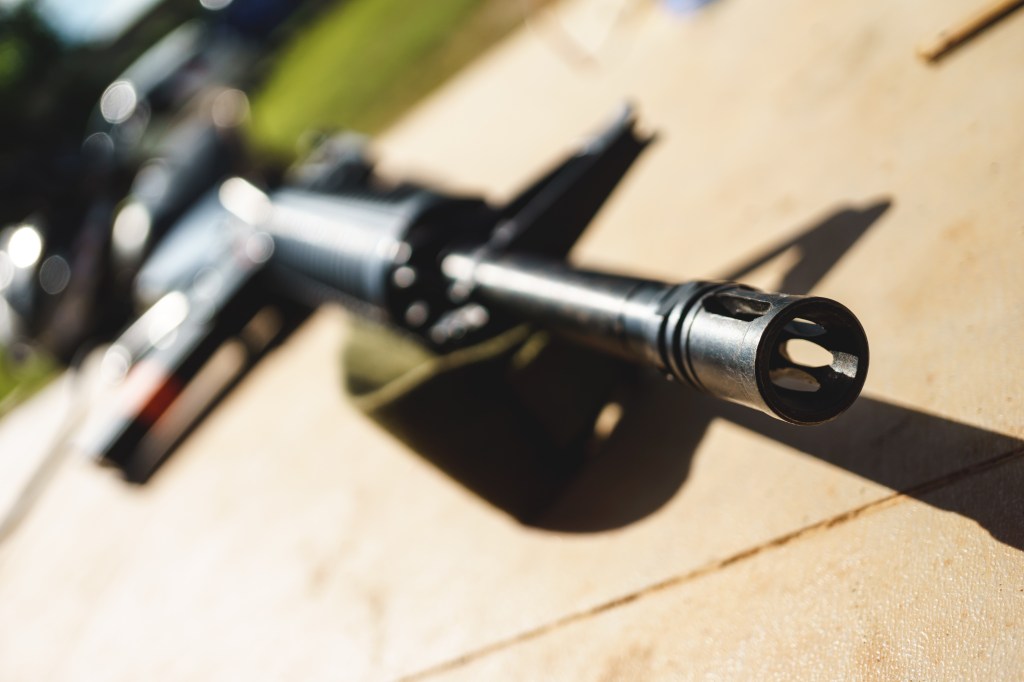
Modular Firearms: Customization and Versatility
The trend toward modular gun designs marks a significant shift in the firearm industry, catering to a growing demand for personalized and adaptable weaponry.
These innovative designs offer a high degree of customization and adaptable weaponry. Modular firearms, also known as customizable guns or versatile gun designs, enable individuals to tailor their firearm configurations to their specific needs, making the concept of gun customization more accessible and appealing than ever before.
Personalized configurations
What exactly is a modular firearm? Essentially, it is a firearm built to be customizable. It allows users to easily swap out components, adapting their firearm for different purposes and scenarios, whether sport, self-defense, or tactical applications.
This adaptability means that a single firearm can serve multiple roles. For example, a user could switch a gun from a configuration optimized for long-range shooting to one suited for close quarters in just a few simple steps. This capability underscores the advantage of modular designs: versatility.
Gun customization
Customization is a critical facet of modular firearms, offering the flexibility to adjust and reconfigure various components to meet a broad spectrum of needs and preferences. Whether a user prioritizes comfort, aesthetics, or performance, these weapons are tailored to specific requirements, including swapping out barrels or grips for enhanced accuracy or a more personalized feel.
This level of customization satisfies individual tastes and enhances the overall experience, allowing shooters to create a firearm that feels like a valid extension of themselves. One example of this is the ability to interchange scopes for better precision or different shooting environments, exemplifying how components play a significant role in the bespoke customization of modular firearms.
Economic practicality
Modular firearm designs are not only practical but also cost-effective. They adopt a “one size fits most” approach, effectively reducing individuals’ need to acquire multiple guns for varied purposes.
This economically sensible approach simplifies the storage and maintenance processes, making it appealing to new and experienced gun owners.
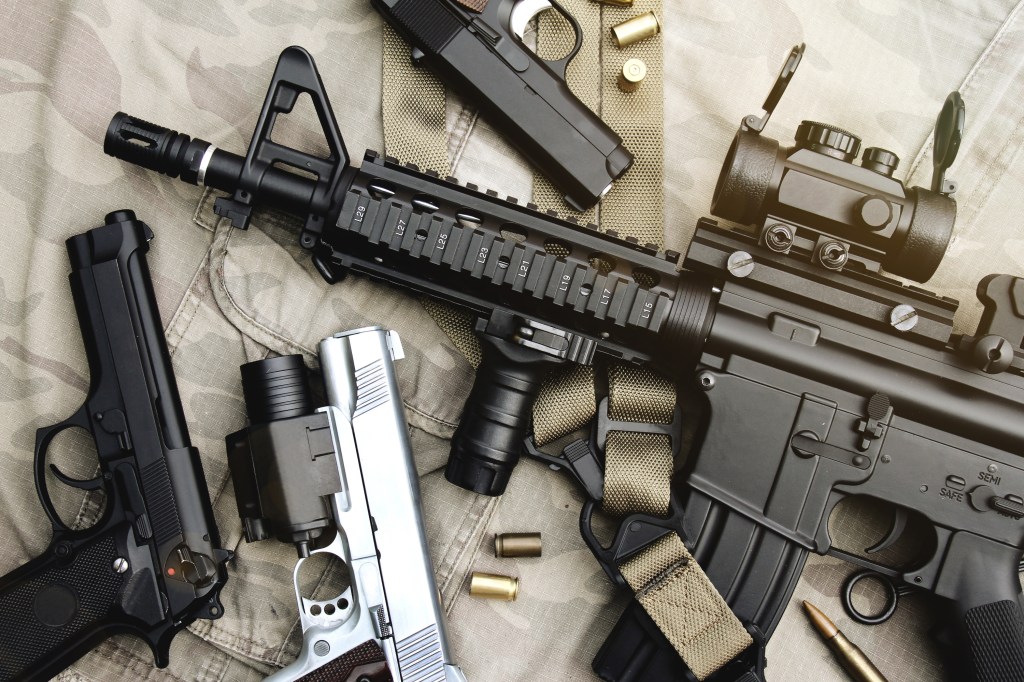
Energy Weapons: The Future of Firepower
This section explores the development and implications of non-traditional energy-based defense and law enforcement weapons. The emergence of such weapons marks a significant shift in defense technology, moving away from conventional firearms towards more sophisticated means of engagement.
Energy weapons
Energy weapons represent the future of firepower, offering unique advantages and capabilities not found in traditional firearms. Using energy-based guns promises to redefine the landscape of defense technology, providing new tools for military and law enforcement agencies.
One key enabler of this transition towards energy weapons is the advancement in high-density electrical power storage. This technology allows for energy weapons’ effective use and portability, making them viable options for real-world applications.
Additionally, the development of nuclear reactors plays a critical role in powering these weapons, offering a sustainable and robust energy source that can support the demands of advanced defense systems.
Integrating energy weapons into military and law enforcement operations also brings significant logistical advantages. These weapons can reduce the fuel requirements needed to operate conventional equipment, simplifying logistics and streamlining operations. This enhances the efficiency of weapons systems and contributes to greater operational effectiveness.
Direct energy weapons, such as lasers, are the most promising applications of energy-based weapons. These weapons offer precise targeting capabilities and can counter high-speed hypersonic weapons, providing a critical defensive measure against emerging threats.

3D Printing: Revolutionizing Gun Manufacturing
The advent of 3D printing technology has significantly impacted gun production and customization, presenting a complex blend of legal and ethical challenges.
This innovative approach to manufacturing allows for the creation of firearms that are difficult to trace, raising concerns over their potential misuse by criminals.
3D printed guns
The difficulty in tracking such weapons stems from their lack of serial numbers, which traditionally help regulate and monitor gun ownership and distribution. As a result, the line between legal and illegal firearms becomes increasingly blurred, posing a dilemma for law enforcement and policymakers.
Recognizing these challenges, there is a growing consensus on the need for vigilant scrutiny and adaptation of laws to address the unique issues presented by 3D-printed guns and gun manufacturing technologies.
Some states have already taken proactive steps by passing legislation that specifically targets DIY gun productions, attempting to balance the critical need for public safety with the rights granted by the Second Amendment.
Gun manufacturing
On the flip side, the benefits of 3D printing technology in gun production cannot be overlooked. Customization options and cost-effective measures are among the most touted advantages, allowing enthusiasts to design and build firearms tailored to their specific needs and preferences.
This has opened up new opportunities for individuals seeking custom guns and introduced a potentially lucrative market.
Despite these positives, traditional gun manufacturers view the rise of 3D printing with concern, as it threatens to disrupt the market by offering an alternative that is hard to compete with in terms of customization and cost.
Ethical conflicts
However, finding this balance remains a contentious issue, reflecting the broader debates surrounding gun control and rights in the United States. This ongoing debate emphasizes the need for stricter regulations and greater stakeholder accountability.
As the debate continues, it will be crucial for lawmakers, law enforcement, and the broader community to engage in thoughtful discussions to address these challenges. Ensuring that technological advances do not come at the expense of safety and security demands a collaborative effort to implement effective regulations and uphold accountability at all levels.
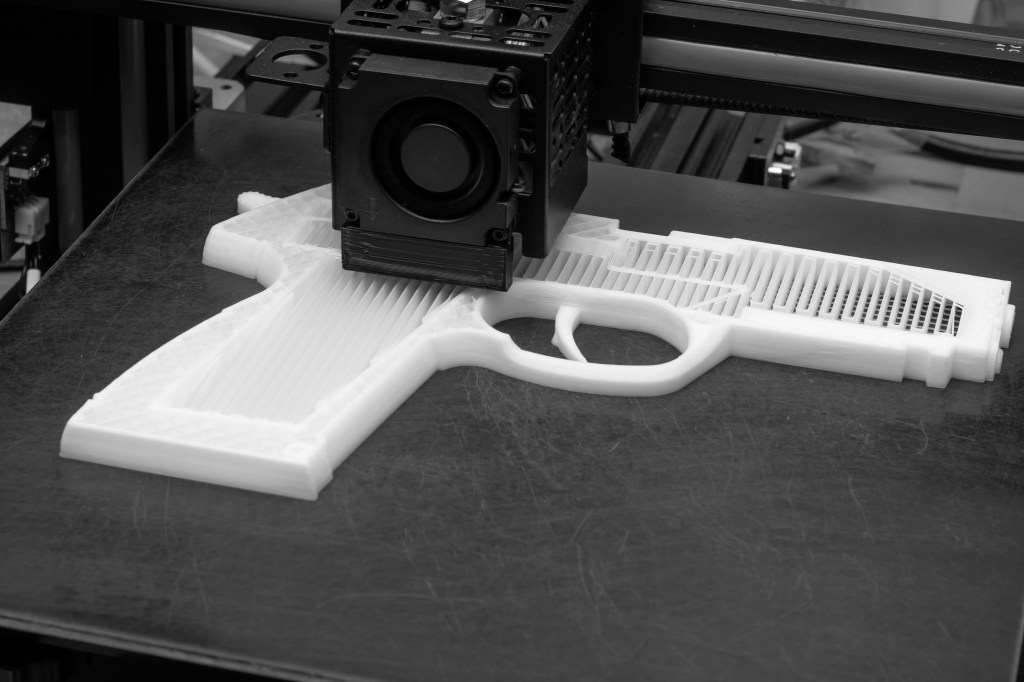
Future Outlook: What to Expect in the Next Decade
In the next decade, the realm of gun technology is set to undergo significant transformations. The emergence of new materials and manufacturing techniques is expected to redefine the parameters of firepower, safety, and even the ethical implications surrounding the use of firearms. As these innovations develop, the integration of advanced materials will not only enhance the durability and efficiency of guns but also potentially alter the landscape of war and conflict.
The intersection of ethics, technology, and human values will become crucial, prompting a reevaluation of the rules of engagement and the manufacture of weapons. The evolving capabilities of firearms will necessitate a balanced approach, weighing the benefits of technological advancements against the potential consequences for humans and society.
Gun technology predictions
Acknowledging the ongoing advancements, this discussion predicts the course these developments might take, considering their potential long-term impacts on society and global security. Moreover, we explore the role of autonomous systems and artificial intelligence (AI) in firearm technology, the advancements in testing and training methodologies, including virtual reality (VR), and the supply chain’s evolving dynamics that support this sector.
AI technology
Integrating AI and autonomous systems into weaponry represents a pivotal shift towards the future of gun technology. These advancements promise enhanced precision and decision-making capabilities in critical situations, potentially reducing collateral damage and increasing the efficiency of military operations.
However, they raise complex ethical and regulatory questions about delegating lethal decisions to machines. The development of these technologies necessitates a nuanced debate about their application and the formulation of robust frameworks to govern their use.
Virtual Reality
Another aspect of this evolution concerns adopting virtual reality (VR) in the testing and training domains. VR technologies offer immersive environments that can simulate real-life scenarios with unprecedented accuracy, enabling soldiers and law enforcement agents to hone their skills without the limitations of traditional training setups. This improves operational effectiveness and significantly reduces the risks and costs associated with live-fire exercises.
Supply chain
The supply chain for gun technology is also undergoing substantial changes, influenced by global economic trends, regulatory transformations, and technological advancements. The future of firearm innovations depends significantly on the capacity of the supply chain to adapt to these changes, ensuring the timely and efficient distribution of advanced weapons and related technologies. This includes overcoming challenges such as material shortages, geopolitical tensions, and the ethical concerns associated with the proliferation of firearms.
As we look towards the next decade, the innovations in gun technology and their implications for society and global security are both promising and daunting. The advancement of AI and autonomous weapons, testing and training methodologies leveraging virtual reality, and the evolving dynamics of the supply chain are set to reshape the landscape of firearm development.
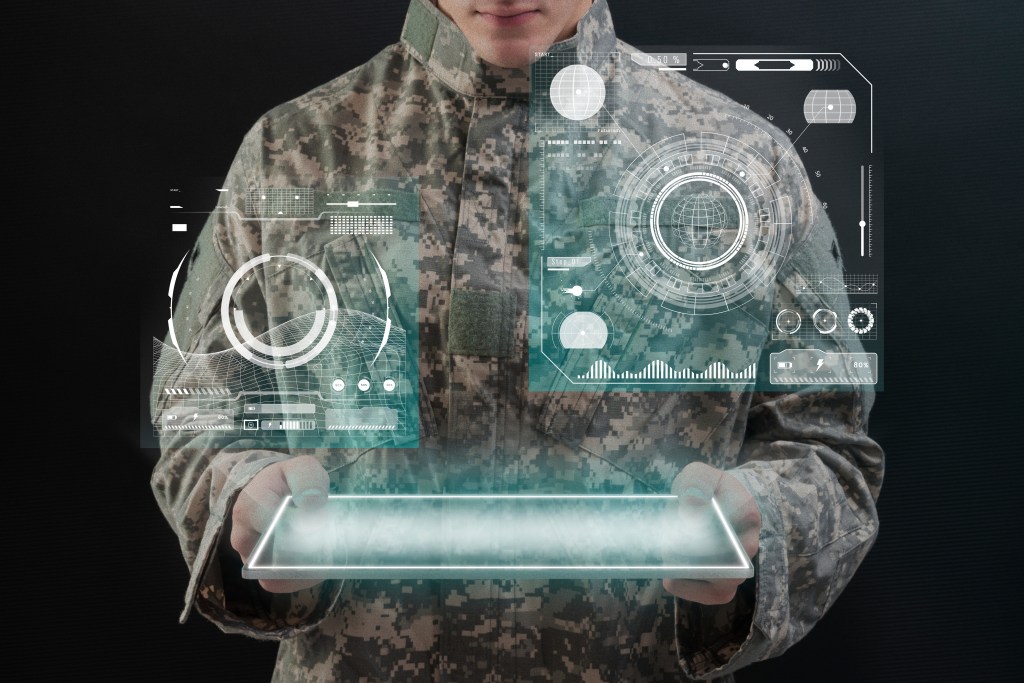
Sources
https://www.americanprogress.org/article/smart-guns-technology-that-can-save-lives/
https://www.lfrt-plastic.com/info/carbon-fiber-application-78377287.html
https://medium.com/@xtn13/the-cutting-edge-of-firearm-optics-smart-scopes-and-beyond-9be2ede44085
https://www.dni.gov/index.php/gt2040-home/gt2040-deeper-looks/future-of-the-battlefield
